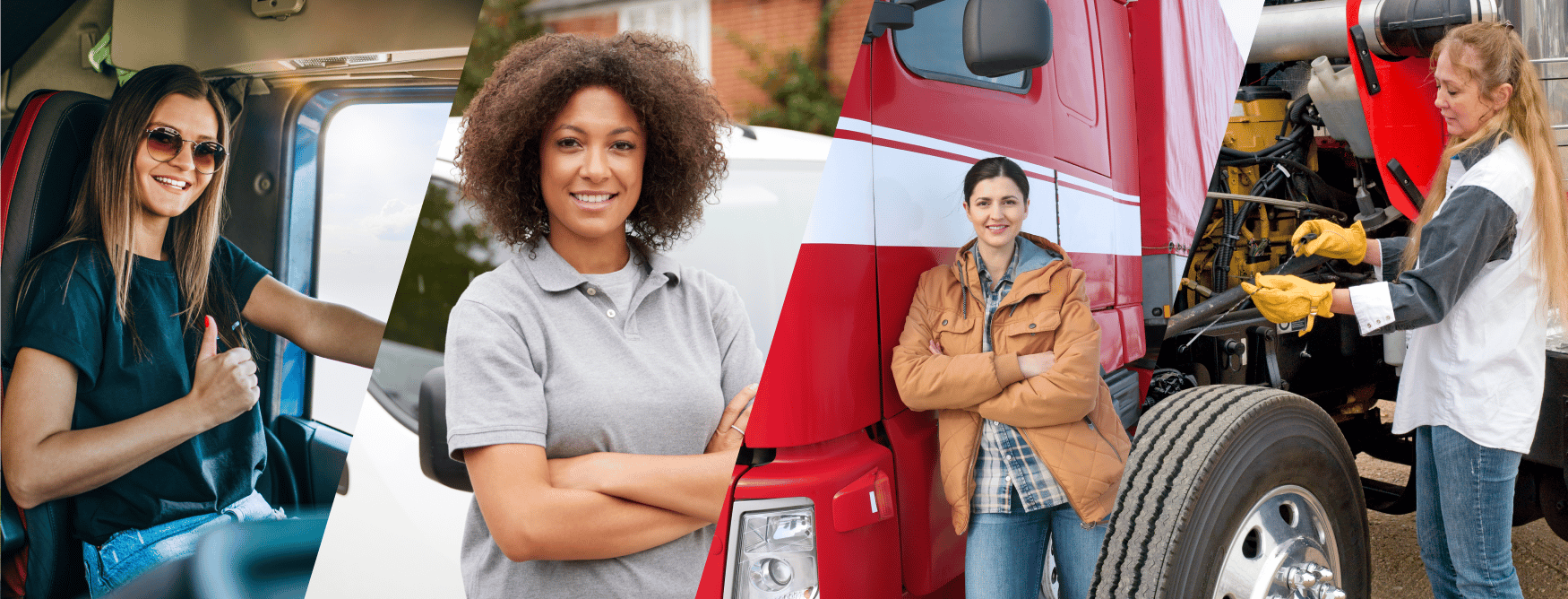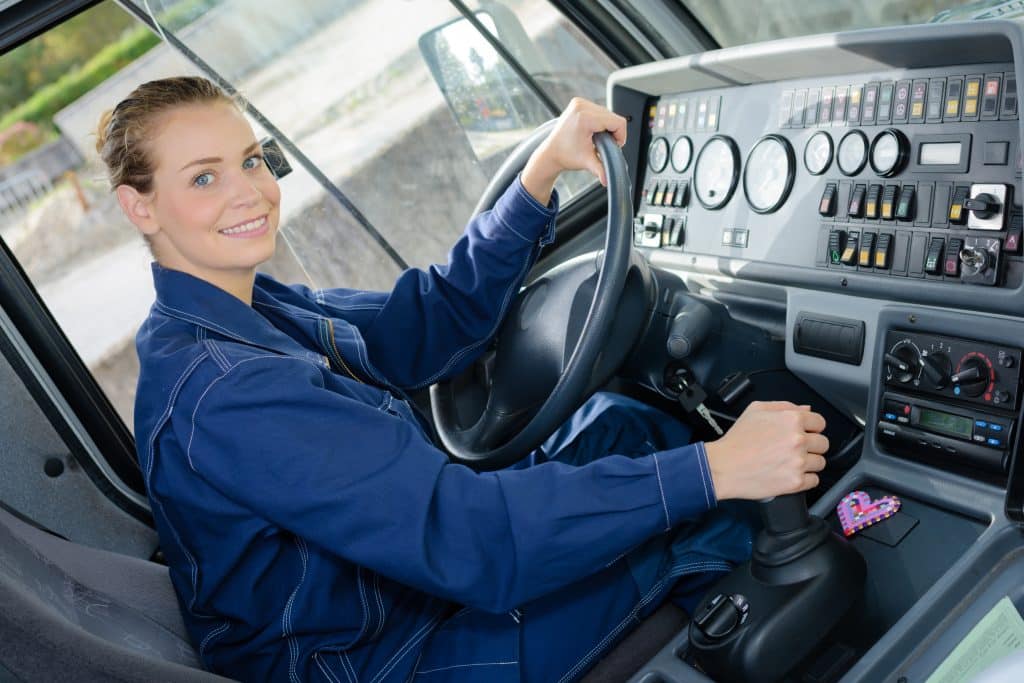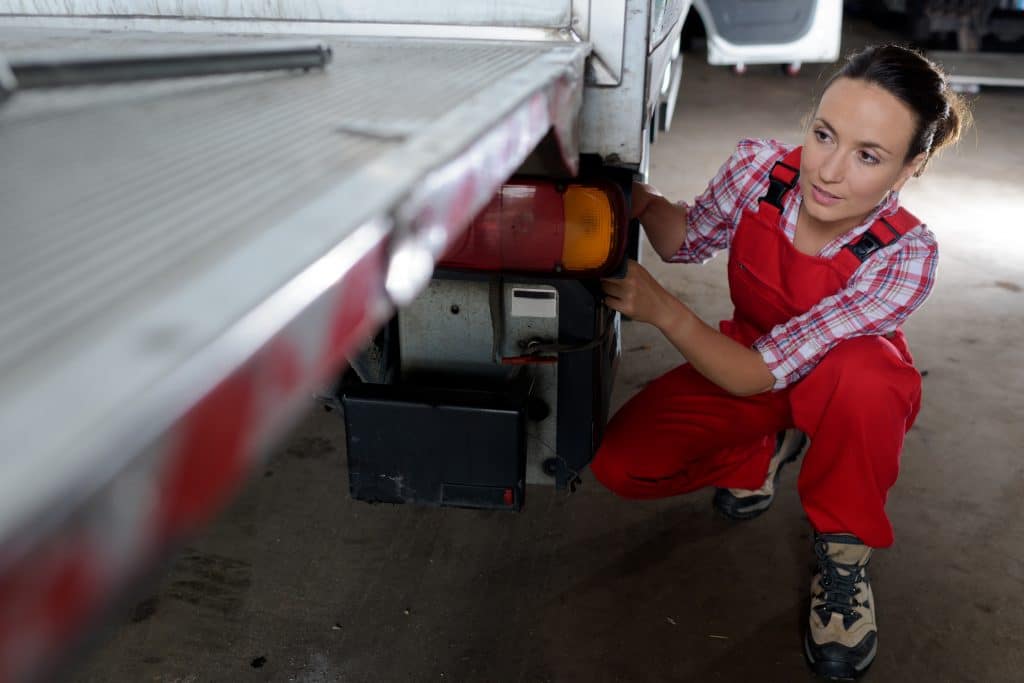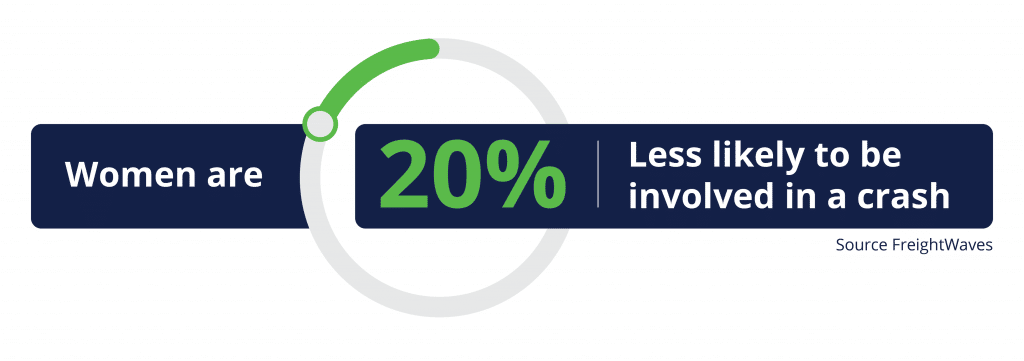The growth of women in trucking
Are you a woman looking into the trucking industry? Here's what you need to know

The number of women in trucking is growing every year. Women are embracing an opportunity to have greater autonomy and financial independence. The trucking industry offers equal pay, schedule flexibility, high growth potential, and a supportive community to incoming women in the trucking industry.
More women are expected to join the industry as drivers in the years to come so, we’re here to give you some insight and tips on how to get started as a lady trucker.
How much do female truck drivers make?

Women truckers have an equal opportunity to earn as much as their male counterparts, if not more because they’re paid per mile. Truckers are typically paid between 28 and 40 cents per mile according to the Bureau of Labor Statistics.
This can add up to anywhere between $500 to $1,200 a week, making it a lucrative-paying job for you as an entry-level driver.
Using Labor Department data, NPR found that pay in the trucking industry rose “nearly 5% in the last year to an average of more than $27.50 per hour.”
There is currently plenty of opportunities to make money in the trucking industry, making it a great fit for anyone looking to earn a steady income. Want to learn how you can make even more money on the road? Check out this blog post here, breaking down how ELDs can be used to drive more miles and make more money.
What percentage of truckers are women?

Currently, nearly 10 percent of truckers are women, according to Women in Trucking and FreightWaves.
These numbers may seem relatively low, but women truckers have increased by nearly 30 percent in only one year and it’s likely to increase more drastically in the years to come. In fact, it’s already grown substantially, as women truckers have increased by 88 percent since 2010.
But what’s the plan to get the number of women to increase further?
Most companies have already begun the process of specifically recruiting women into the industry using a variety of tactics, something that Women in Trucking believes is crucial.
One of these tactics has been representing women in hiring advertisements. In a blog post, Women in Trucking describes how including women in hiring ads should be a top priority for trucking companies.
“If your recruiting ad doesn’t include women, or worse yet, excludes women, you won’t get their attention. Don’t always show a male driver in your ads, and don’t assume the only woman in your ad should be the wife at home,” reads the blog post.
This approach has seemingly worked, as women have become more open to the prospect of being truckers, especially in recent years.
Additionally, the effort to recruit women has been bolstered by the FMCSA, which worked with Women in Trucking to create the Women of Trucking Advisory Board.
According to Fleet Owner, the board is tasked with identifying the following:
- Industry trends that directly or indirectly discourage women from pursuing careers in trucking, including any differences between women minority groups, women who live in rural, suburban, and urban areas, and any safety risks unique to the trucking industry.
- Ways in which the functions of trucking companies, nonprofit organizations, and trucking associations may be coordinated to facilitate support for women pursuing careers in trucking.
- Opportunities to expand existing opportunities for women in the trucking industry.
- Opportunities to enhance trucking training, mentorship, education, and outreach programs that are exclusive to women.
Once the board releases its findings, the industry will have additional insight and best practices when it comes to hiring women. Women in Trucking President and CEO Ellen Voie believe that the creation of the board will help “create a more female-friendly environment in supply chain careers so we can not only attract and retain but promote women in trucking.”
Though much of the focus has recently centered around increasing female truckers on the road, it’s important to note that there are a variety of roles in the industry that require more representation of women.
FreightWaves and Women in Trucking collaborated to find data on the growth of women in the trucking industry. They found that women make up:
- 45% of the non-executive trucking workforce
- 38% of fleet safety professionals
- 36% of leadership roles in transportation
- 24% of the executive trucking workforce
- 4% of owner-operators
- 4% diesel technicians
Currently, women also make up about 35% of dispatchers, according to Zippia.
Trucking may still be a mostly male industry, but with all the resources and attention being placed towards increasing the representation of women, there’s hope that this will change drastically in the years to come.
Is it hard to be a female truck driver?
Most professions come with inherent pros and cons, which is also true of trucking. Being a truck driver is a tough job, but rewarding in that it allows you to traverse the country and gives you a certain autonomy you can’t find anywhere else.
It also helps that it pays you handsomely for your time on the road.
However, being on the road for so long can come with its own issues. From driving in adverse weather conditions to being involved in an accident–you may have to deal with some hurdles along the way.

The good news is that female truckers have statistically proven to be safer behind the wheel. Per American Transportation Research Institute data male truckers are:
- 88% more likely to have a reckless or negligent driving conviction
- 78% more likely to have a seat belt violation
- 73% more likely to be convicted of running a stoplight
- 70% more likely to be convicted of driving 1 to 15 mph over the speed limit
According to 2019 FMCSA crash data, female truckers also tend to get into fewer accidents.

In an interview with Bloomberg, FMCSA deputy administrator Meera Joshi expanded on the unparalleled safety benefits of hiring women.
“I’ve seen research that says women drivers are safer,” Joshi told Bloomberg. “I’ve seen research that says experienced drivers are safer. If you put those two together, that’s the winning combination.”
Is truck driving a good career for women?
There’s never been a better time to get started as a truck driver. Not only has pay for truckers increased, but the industry is improving the ways in which it accommodates female truckers.
As we previously mentioned, the creation of the Women of Trucking Advisory Board will help continue to push the industry forward and give companies additional insight into what they need to hire more women and end the driver shortage.
Tip: Finding resources to get ahead
Because there’s a record amount of women truckers in the industry, the learning curve is also much less prevalent. Organizations such as Women in Trucking, Real Women in Trucking, and S.H.E Trucking provide you with a plethora of insight you can use to ahead.
Whereas women in the past had little resources to learn the industry from a women’s perspective, you now have social media, allowing you to be a part of spaces that share information and guidance.
YouTube is a massive resource for women getting started in trucking, as there are a variety of female truckers who record their experiences on the road and provide you with insight into what it’s like to be a woman on the road.
Another resource you can use to your advantage is an electronic logging device like GPSTab. If you’re getting started in the industry with your new authority, start your 7-day free trial today and we can show you how to drive more miles and make more money.





